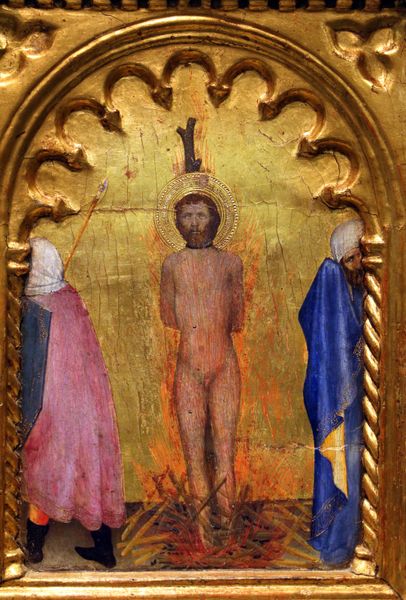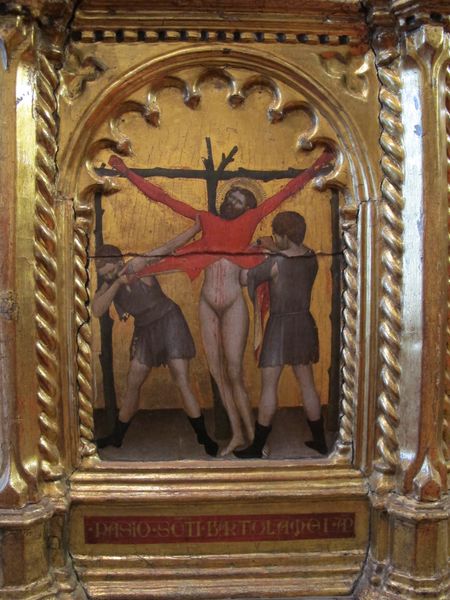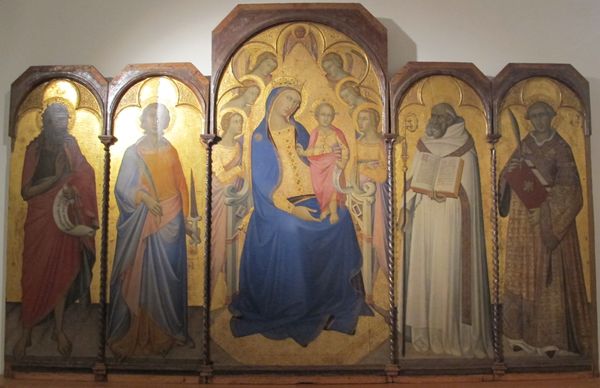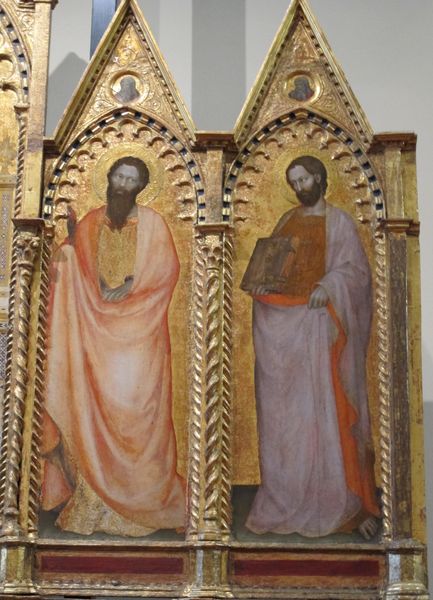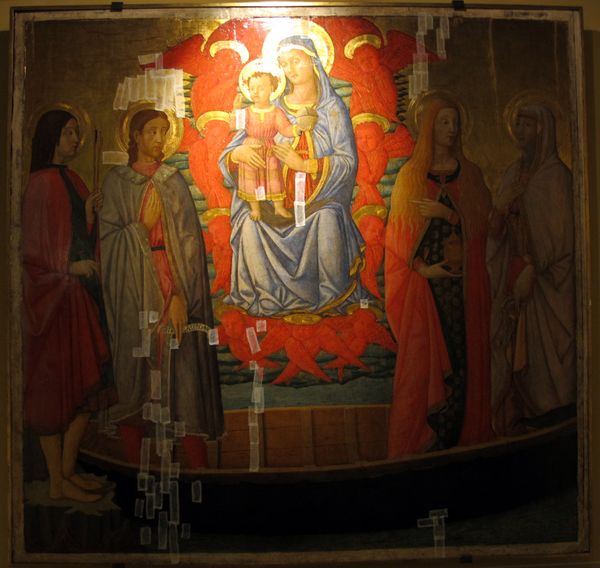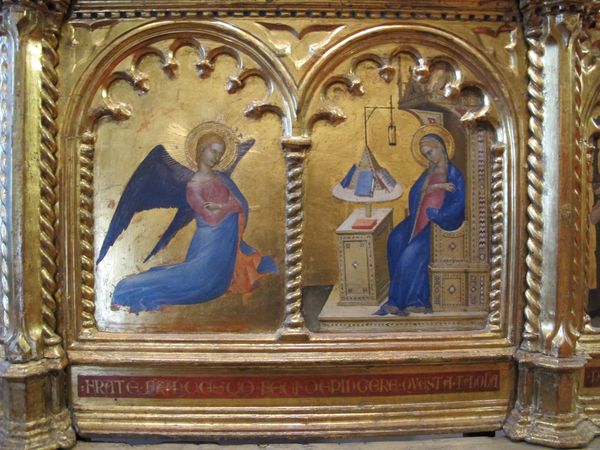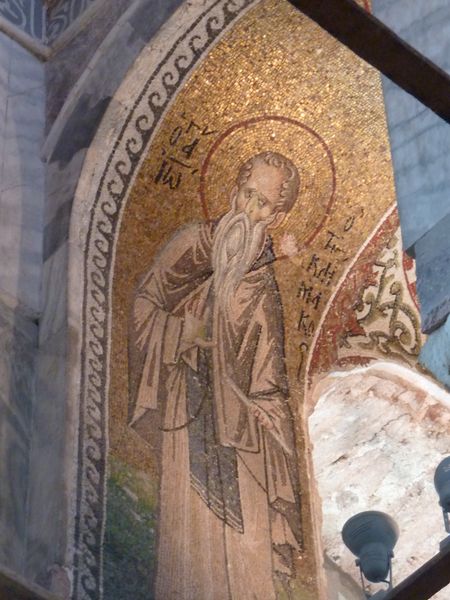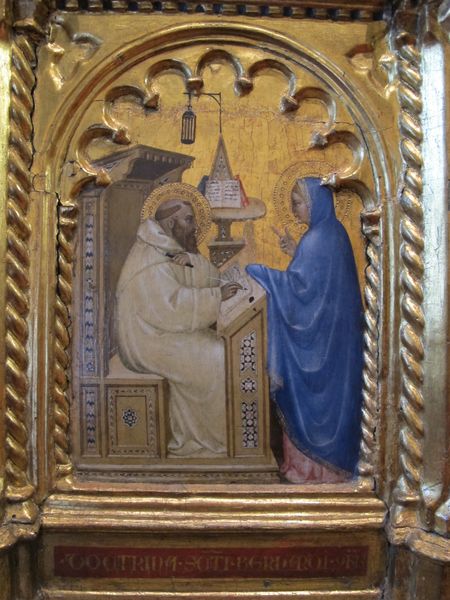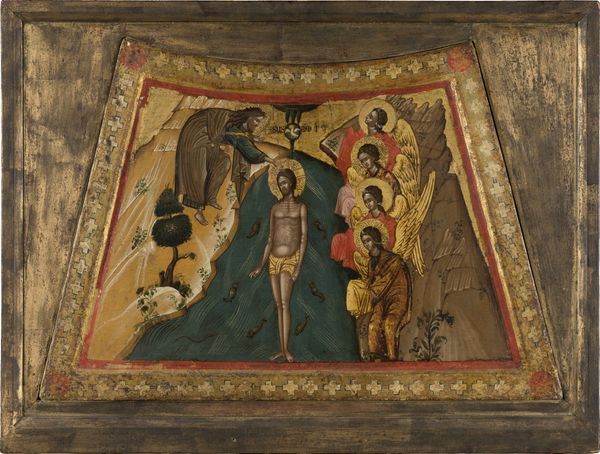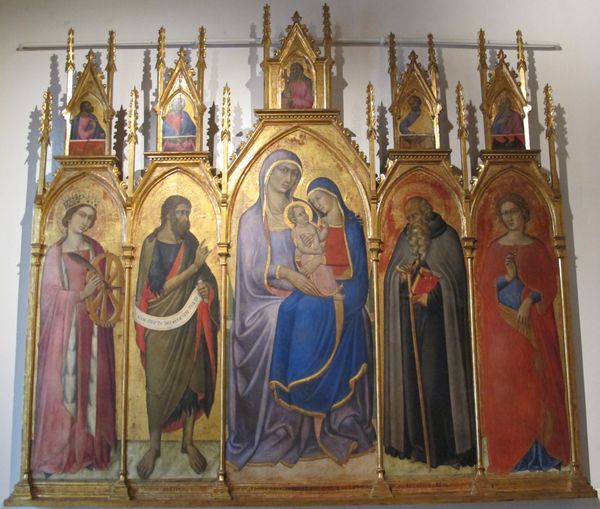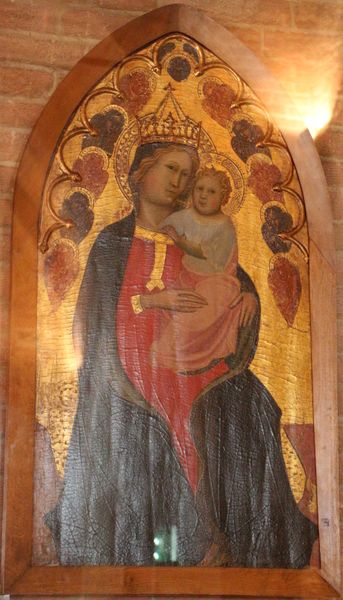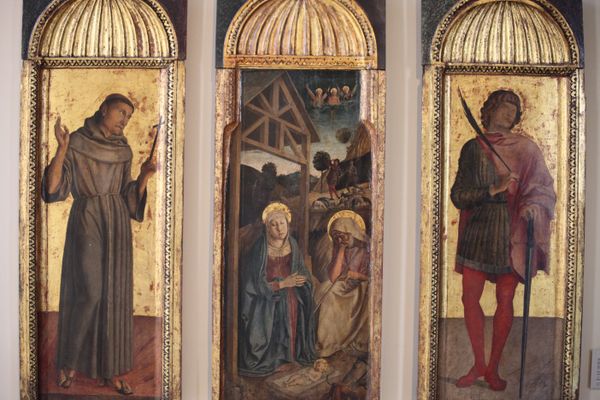
tempera, painting
#
medieval
#
narrative-art
#
tempera
#
painting
#
figuration
#
history-painting
#
italian-renaissance
Copyright: Public domain
Editor: Here we have Giovanni da Milano’s "Martirio di S. Barnaba," made around 1370 using tempera paint. It’s striking how direct and unembellished the depiction of Saint Barnabas’s martyrdom is. What story does this painting tell within its historical moment? Curator: Indeed, this piece isn’t just about depicting an event; it's about constructing a specific visual narrative for its audience. Considering its original location, likely a predella for the Da Spedale della Misericordia altarpiece, this martyrdom takes on a new layer of meaning. How would the context of a charitable hospital influence the way people view this depiction of suffering? Editor: It feels like it might serve as a potent symbol of sacrifice and resilience in the face of hardship, which resonates well with patients. What is the importance of visualising the story like that for the public role of art? Curator: Precisely. The Italian Renaissance wasn’t just a rediscovery of classical aesthetics, it was also a strategic deployment of images to reinforce religious and social structures. The emotional directness would allow those interacting with this piece to personally identify with the imagery of St. Barnaba and thus to encourage public devotion. How do you see the politics of imagery playing out here? Editor: By making such a brutal event almost approachable, maybe even beautiful in its composition and colour, the painting softens the edges of harsh reality and makes faith a little more… palatable? Almost like a form of institutional promotion. Curator: Exactly! It brings up important questions about how power structures use visual narratives to perpetuate certain ideologies, even through acts of apparent piety or artistic expression. Reflecting on this dialogue, what stands out for you regarding the relationship between art, history, and public perception? Editor: I hadn't initially thought about the setting as shaping its reception. I will never see devotional paintings in the same way! It makes me consider art’s role in society in a very new light.
Comments
No comments
Be the first to comment and join the conversation on the ultimate creative platform.
